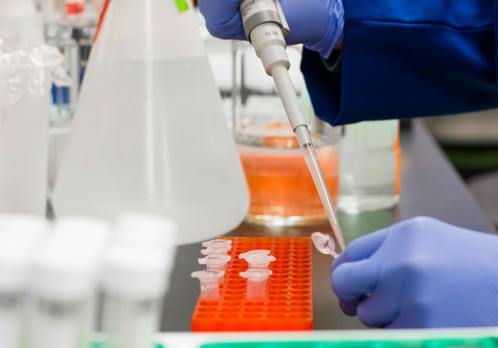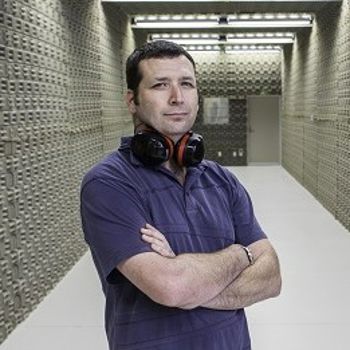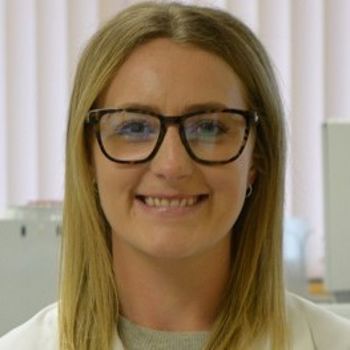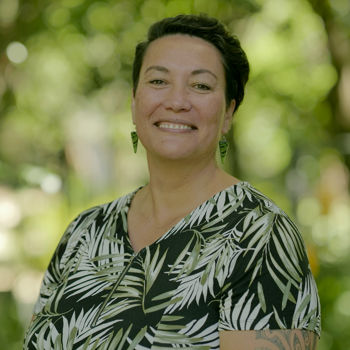Te whakaiti tūkinotanga pūroi
Reducing drug harm
PHF Science uses science and innovation to contribute to national efforts to reduce drug harm. We deliver a wide range of specialist services to support informed decision making, this includes the analysis of drugs and medicines, and research and development activities.

ABOUT
Addressing harm associated with the use of drugs is critical and complex, challenging organisations and communities across New Zealand. Our experts apply world-leading science and independent advice, working closely with health and community partners to support public safety, and empower informed decision-making to reduce drug-related harm.
EXPERTISE
Expertise
PHF Science host a wide range of expertise to provide analysis of drugs and associated samples for evidential and intelligence purposes. We work with New Zealand Police, coroners and pathologists to analyse biological specimens such as blood, urine, liver and stomach contents to determine the involvement of drugs or poisons in deaths or criminal investigations. We also work with New Zealand Police and Customs to provide analysis of drug powders, tablets, plant material and other related items. Additionally, PHF Science provides support to New Zealand Police for the analysis of clandestine laboratories. In the workplace, our accredited drug testing programme helps employers to meet safety obligations by detecting substances that may impair performance. We work with clients across sectors to test for alcohol, illicit drugs, and certain legal medications, helping to protect both individuals and organisations. Additionally, PHF Science works closely with the Alcohol and Other Drug Treatment Court to provide specialised analytical services to support drug rehabilitation of participants. PHF Science experts identify emerging substances and monitor drug trends through innovative programmes and services such as the National Drugs in Wastewater Programme, the Lumi™ Drug Scan designed in collaboration with New Zealand Police , and the Methamphetamine Calculator. As expert scientists, we provide independent advice and are an objective collaborator in national efforts to reduce drug harm in Aotearoa New Zealand
Expertise
National Drugs in Wastewater Programme
PHF Science scientists harness the power of wastewater to understand drug usage trends in Aotearoa New Zealand. To date, wastewater testing has been used to measure consumption of illicit drugs including methamphetamine, MDMA, cocaine, heroin and fentanyl. Insights from the National Drugs in Wastewater Programme are published each quarter on the New Zealand Police website.
Forensic toxicology
Our forensic laboratories are accredited by the ANSI National Accreditation Board (ANAB), in the field of forensic science testing, to the international standard of ISO/IEC 17025. ANAB provides accreditation services to public and private sector organisations and is a subsidiary of the American National Standards Institute (ANSI).
Our Forensic Toxicology team works closely with New Zealand Police, coroners and pathologists to undertake analyses related to their investigations. When a death or alleged criminal act has occurred, our scientists analyse biological specimens such as blood, urine, liver and stomach contents, to determine the potential involvement of drugs, medicines and/or poisons.
PHF Science also analyses blood samples taken from drivers suspected of driving while impaired by drugs and alcohol and can provide an estimate of a blood alcohol concentration at the time of a specific incident.
Forensic drug chemistry
Our Forensic Drug Chemistry team provides evidential drug analysis for New Zealand Police and Customs. This includes identification of controlled drugs and medicines, and purity analyses of selected substances. As experts in drugs, the team receives a range of sample types suspected of containing controlled substances. The Drug Chemistry team also offers intelligence to the National Drug Intelligence Bureau.
Other workstreams for the Forensic Drug Chemistry team include the analysis of hemp to ensure plant material is meeting the legislative requirements for THC content and operation of a screening laboratory with the New Zealand Customs Service. The Drug Chemistry team also supports licenced Drug Checking Services, a world first in Aotearoa.
Workplace drug testing
PHF Science's workplace drug testing service detects certain drugs in urine samples. Our testing may indicate when someone’s ability to carry out their duties safely is compromised, presenting a danger not only to the individual but also potentially to work colleagues and the community.
Having a comprehensive workplace drug testing programme helps employers meet statutory obligations in terms of taking practicable steps to ensure the safety of employees while at work – and protecting the reputation of businesses.
Our procedures are accredited by International Accreditation New Zealand to AS/NZS 4308:2008 ‘Procedures for specimen collection and the detection and quantitation of drugs of abuse in urine’. We can work with clients from any sector or organisation to test for drugs that impair performance including alcohol, illicit drugs and certain legal drugs. You can find out more by contacting us here.
Lumi Drug Scan Device
Co-developed by PHF Science and New Zealand Police, Lumi™ Drug Scan is a cutting-edge service that combines the power of a handheld near-infrared device and machine learning models to detect if a sample contains cocaine, MDMA or methamphetamine. The results are displayed in the Lumi™ Analysis app on the law enforcement officer’s mobile phone within seconds, having been compared against thousands of previously scanned samples by PHF Science and stored securely in the cloud. The results are also compiled in the Lumi™ Analytics Dashboard which shows regional drug-use trends. More information on the Lumi Drug Scan Device can be found here.
Methamphetamine Calculator
PHF Science has developed a Methamphetamine Calculator to help interpret the methamphetamine readings supplied by methamphetamine testing companies. It helps give some perspective to the levels of contamination being observed and the potential cause based on current research. Find out more about PHF Science's Methamphetamine Calculator.
Clandestine laboratories
PHF Science also has a specialist Clandestine Laboratories team, working closely with New Zealand Police to provide expertise on drug manufacture. The highly trained chemists in this team are equipped to dismantle methamphetamine laboratories and provide forensic sampling and analysis services.
DRUG CHECKING SERVICES
Drug checking services
PHF Science experts and partners around the country support drug checking and other drug harm reduction technologies and initiatives. PHF Science is one of five drug checking providers licenced by the Ministry of Health. Through this important anonymous service, PHF Science helps keep people who choose to use substances safer by making information available to them about what's actually in the substances they’re consuming. As part of this PHF Science experts work closely with partners in the health system and community sector.
NEWS AND PUBLICATIONS
News and publications

Wastewater data guides action to reduce drug harm
31 October 2025

New PHF Science-led project aims to curb harm from Fantasy with on-the-spot test
01 April 2025

PHF Science 'Smart Idea' paper-based drug test wins $1 million in research funding
14 October 2024

Lumi™ Drug Scan shortlisted for prestigious world police award
02 March 2023

Wastewater data guides action to reduce drug harm
31 October 2025

New PHF Science-led project aims to curb harm from Fantasy with on-the-spot test
01 April 2025

PHF Science 'Smart Idea' paper-based drug test wins $1 million in research funding
14 October 2024

Lumi™ Drug Scan shortlisted for prestigious world police award
02 March 2023
Workflow to facilitate the detection of new psychoactive substances and drugs of abuse in influent urban wastewater
The complexity around the dynamic markets for new psychoactive substances (NPS) forces researchers to develop and apply innovative analytical strategies to detect and identify them in influent urban wastewater.
The use of prescription medication and other drugs by New Zealand drivers with illegal blood alcohol levels
14 Oct, 2024
This study examined the prevalence of the use of prescription medicines and other drugs by a selected subgroup of New Zealand drivers. The use of potentially impairing prescription drugs by the driving population is largely unknown. The population studied was drivers who were stopped by police, failed a breath alcohol test, elected to provide a blood sample for laboratory analysis, and had blood alcohol levels exceeding the legal limit.
The behaviour and transformation of pseudoephedrine/ephedrine cutting agents during the manufacture of methamphetamine.
No description availalble
Controlling new psychoactive substances in New Zealand
The emergence of new psychoactive substances into the global drug market has presented challenges for effective drug legislation and enforcement. One approach to prohibition uses controlled drug analogue legislation, which involves assessing the structural similarity of new substances compared to listed controlled drugs, as opposed to the new substance being specifically listed in legislation itself. An issue arises of there being no clear definition for what constitutes similarity between two substances, and as such, there is level of subjectivity in any decision made. This paper outlines the global and local drug scene in New Zealand, including the emergence of new psychoactive substances, and the legislation that is available for the control of illicit substances in a New Zealand context and the current method for considering new psychoactive substances as potential controlled drug analogues. The authors go on to propose an alternative method to this assessment process, which involves an objective and reproducible similarity scoring mechanism.
Fantasy islands-The emergence of NMP in GBL-containing liquids in New Zealand
Over the last few years there has been a dramatic increase in the amount of “Fantasy” type drugs seized in New Zealand, with gamma-butyrolactone (GBL) being by far the most prevalent. In 2018, N-methyl-2-pyrrolidone (NMP) was detected in a liquid, along with GBL, for the first time in New Zealand. Since this seizure, the number of seizures containing mixtures of GBL and NMP that have been submitted for analysis by New Zealand authorities have significantly increased, with 82% of submitted samples containing GBL also containing NMP. Analysis of these liquids showed that the majority had GBL and NMP purities of approximately 60–70% and 30–40%, respectively. Subsequent investigations by New Zealand authorities revealed a potential source of these liquids being a diverted legitimate industrial product. The health and psychoactive effects of NMP, along with GBL and NMP mixtures, are unknown. Health statistics in New Zealand have indicated increased harm from GBL use over the last few years.
The impact of traditional kava (Piper methysticum) use on cognition: Implications for driver fitness
Few studies have examined the impact of kava (Piper methysticum G. Forst. f.) on cognition when consumed at traditionally influenced volumes; most have used modified tablet-form kava, with the results erroneously overlaid on naturalistic kava consumption. Kava is a culturally significant Pacific drink with similar effects to Benzodiazepine. Traditionally influenced kava use sessions last, on average, 6 h in which attendees consume 3.6 L (7.6 pints) each of beverage kava, with some then driving home.
Prevalence of psychoactive drugs in injured patients presenting to an emergency department.
The aim of the present study was to obtain an unbiased understanding of the prevalence of psychoactive drugs in trauma patients presenting to a large ED.
MEET THE TEAM
Experts in our teams

Alex Mayer
Senior Technician

Angus Newton
Lead Senior Scientist

Chrissy Black
Senior Scientist

Heidi Baker
Forensic Science Liaison

Helena Rattray-Te Mana
Scientist

Jessie Davys
Senior Technician

Jo Bright
Senior Science Leader

Katrina Betty
Senior Technician

Oliver Linsell
Workstream Coordinator / Scientist

Olivia Johnson
Senior Scientist

Samantha Coward
Team Leader